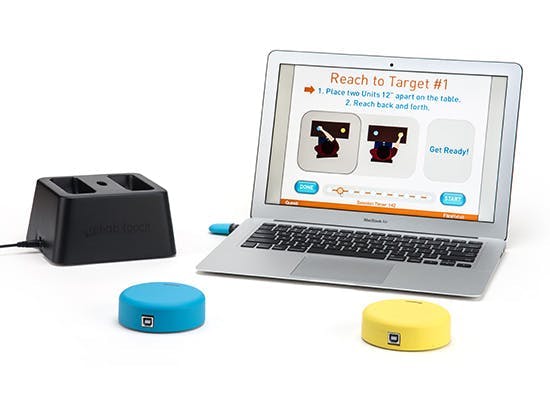Imagine hearing a sound loud and clear—but not being able to make sense of what it means. You might hear a dog barking but not recognize it as a bark. Or hear someone speaking yet not understand a single word, even though your hearing is perfectly fine. This puzzling condition is known as auditory agnosia.
While rare, auditory agnosia sheds light on how the brain processes sound. It’s not about the ears failing to hear; it’s about the brain struggling to interpret what’s heard. In this article, we’ll explore what auditory agnosia is, its symptoms, the different types, and current treatment approaches.
What Is Auditory Agnosia?
Auditory agnosia is a neurological disorder that affects how the brain interprets sounds. People with this condition can physically hear noises, music, or speech, but they can’t recognize or understand them. Their hearing ability is intact—the issue lies in the processing centers of the brain.
This condition typically arises after brain damage, particularly in the temporal lobes where auditory information is processed. Approximately 70% of certain types of auditory agnosias are caused by stroke. Ear problems, hearing loss, or issues with the auditory nerve are not involved. Instead, auditory agnosia involves a disconnect between hearing and comprehension.
Auditory agnosia is relatively uncommon, but when it does occur, it can significantly affect communication, independence, and quality of life. Of note, there are several other types of agnosia, such as visual or tactile agnosia, which also involve deficits in recognizing stimulus due to difficulties interpreting sensory input.
Auditory Agnosia Symptoms
Symptoms vary depending on the type of auditory agnosia a person has, but common signs include:
- Difficulty recognizing familiar sounds (e.g., doorbells, alarms)
- Trouble understanding spoken language despite normal hearing
- Inability to differentiate musical tones or recognize melodies
- Appearing confused or unresponsive when hearing sounds
- Struggling to follow conversations, especially in noisy settings
- No evidence of hearing impairment on an audiogram
The symptoms can be subtle at first, and many people initially mistake them for hearing loss or cognitive decline. But the key difference is that the ears are working properly—the brain simply isn’t interpreting the sounds as it should.
Types of Auditory Agnosia
Auditory agnosia is not a one-size-fits-all condition. In fact, it comes in several forms, each affecting how specific types of sound are interpreted. Let’s explore the most well-known types.
Pure Auditory Agnosia – Cortical Deafness
Cortical deafness is the most severe form of auditory agnosia. People with this condition seem completely deaf—they don’t respond to any sounds, including speech, environmental noises, or music. However, their hearing system (ear, cochlea, auditory nerve) remains functional.
The issue lies in the brain’s auditory cortex, particularly damage to both temporal lobes. Because of this bilateral brain damage, the brain cannot register or process sound at all.
Key features of cortical deafness include:
- Appears as complete deafness despite no damage to the ear
- No reaction to loud sounds or verbal commands
- Speech and communication are significantly impaired
This form of auditory agnosia is rare and often the result of stroke, traumatic brain injury, or severe infections affecting both sides of the brain. With treatment, cortical deafness may slightly improve or evolve to more selective forms of auditory agnosia.
Verbal Auditory Agnosia – Word Deafness
Word deafness, also known as verbal auditory agnosia, affects a person’s ability to understand spoken language. They can hear voices but can’t make sense of the words being spoken. Other sounds, like music or environmental noises, are recognized normally.
Think of it as listening to a foreign language you’ve never studied—the sounds are audible, but they carry no meaning.
Key symptoms of verbal auditory agnosia:
- Speech sounds like gibberish, rustling leaves, or an unfamiliar language to those with verbal auditory agnosia, but they can still recognize and identify non-verbal sounds such as a dog barking
- Difficulty following spoken instructions or repeating words spoken to them
- Good understanding of written or visual communication
- Able to speak fluently
This condition is often linked to damage in the left temporal lobe, where language processing occurs. While verbal auditory agnosia may occur due to damage in only one area of the brain, it often involves bilateral lesions. It’s especially frustrating for patients because they may still be able to speak and read fluently—yet struggle to understand when others speak.
This condition is similar to and often evolves from Wernicke’s aphasia, which involves difficulties understanding language that affects both language comprehension and speech.
Nonverbal Auditory Agnosia
Nonverbal auditory agnosia is the opposite of word deafness. Individuals with this condition can understand speech just fine—but they can’t recognize or interpret non-speech sounds. These might include doorbells, alarms, animal sounds, or even the wind in the leaves.
To someone with nonverbal auditory agnosia, everyday sounds lose their identity. A ringing phone may be heard, but not recognized as a phone. This can affect safety and independence.
Symptoms of nonverbal auditory agnosia:
- Inability to identify environmental sounds
- Reliance on visual or contextual clues
- Trouble reacting to warning sounds like alarms or sirens
It’s usually associated with right-sided or left-sided brain damage and can lead to confusion in unfamiliar environments.
Amusia (Music Agnosia)
Amusia, or music agnosia, is a specific type of auditory agnosia that affects the perception and appreciation of music. People with amusia may be unable to recognize melodies, distinguish between different tones, or even detect musical rhythm. Some describe music as noise or find it unpleasant.
There are two types of amusia:
- Acquired amusia: Caused by brain injury, often in the right temporal lobe.
- Congenital amusia: Affects 1.5% of the world population, involves a lifelong difficulty in processing music, often labeled as being “tone-deaf.”
Common signs of amusia or music agnosia include:
- Difficulty identifying familiar tunes
- Inability to sing or reproduce musical notes
- Music may sound distorted or meaningless
While amusia doesn’t affect speech or environmental sound recognition, it can still impact quality of life, especially for those who previously enjoyed music. Some studies suggest those with congenital amusia may also have trouble in non-music related areas, such as visual-spatial processing, language or reading difficulties, facial recognition or emotional processing.
What Causes Auditory Agnosia?
Auditory agnosia is typically caused by damage to the brain’s auditory processing regions. Common causes include:
- Stroke: A leading cause, especially when it affects the temporal lobes.
- Traumatic brain injury (TBI): Head injuries, specifically those that damage auditory pathways.
- Brain tumors: Particularly in the auditory cortex.
- Infections: Such as encephalitis, which can inflame brain tissue.
- Neurodegenerative diseases: Conditions like Alzheimer’s may contribute over time.
Bilateral damage (damage to both sides of the brain) is often required for more global forms of auditory agnosia like cortical deafness, while unilateral damage can lead to more selective agnosias (e.g., word deafness or amusia).
Diagnosing Auditory Agnosia
Diagnosis usually involves a combination of tests to rule out hearing loss and identify the specific type of agnosia. These may include:
- Audiological tests: Confirm hearing ability is intact
- Neurological exams: Identify brain injuries or abnormalities
- Imaging: MRI or CT scans to locate areas of brain damage
- Speech-language assessments: To evaluate how well the person understands different types of sounds
Because auditory agnosia is rare, it may be misdiagnosed as hearing loss or psychological issues at first. Proper evaluation by a neurologist and speech-language pathologist is essential for an accurate diagnosis.
Auditory Agnosia Treatment: 6 Tips for Improving Auditory Agnosia
There’s no one-size-fits-all treatment for auditory agnosia, but therapy can help people adapt and improve communication. Treatment focuses on retraining the brain and finding alternative strategies to compensate for lost abilities.
Let’s dive into some of the most common ways you can improve auditory agnosia.
1. Speech and Language Therapy
For word deafness, therapy often includes:
- Auditory training to help recognize speech patterns
- Lip-reading strategies
- Written communication techniques
- Repetition and exposure exercises
Speech-language pathologists play a crucial role in guiding recovery and helping patients reconnect sound with meaning.
There are also a number of speech and language therapy apps that can help you train at home or on the go in between sessions.
2. Environmental Sound Training
For nonverbal auditory agnosia, therapists may use recordings of everyday sounds paired with images or objects. The goal is to re-establish associations between the sound and its source.
Over time, people may regain partial recognition or learn to use other senses (like sight or touch) to interpret their surroundings.
3. Music Therapy
In cases of amusia, music therapists may help improve pitch recognition, rhythm skills, or simply find other ways to enjoy music. While full recovery is rare, many people regain some level of appreciation or understanding.
4. Cognitive Rehabilitation
Especially helpful after stroke or TBI, cognitive rehabilitation focuses on broader thinking skills, attention, and memory. This can indirectly improve auditory processing and help patients adapt more effectively.
The CT Speech and Cognitive Therapy App is a great option for something to help at home. It offers 500,000+ unique exercises across 90 therapy areas developed by neuroscientists and clinicians.
5. Assistive Technology
Hearing aids don’t help with auditory agnosia directly. However, technology like speech-to-text apps, visual alerts for alarms, or captioning services can support daily life. This support can help dramatically improve mood and quality of life which is an extremely important piece of managing agnosia.
6. Family and Caregiver Support
Education and training for family members can improve communication and reduce frustration. Techniques like speaking slowly, using visual cues, or confirming understanding can make a big difference.
7. Coping Strategies
Coping with auditory agnosia can be frustrating, but many people learn strategies to adapt. Early intervention and consistent therapy are key. Support from caregivers, therapists, and peer communities also helps reduce isolation and improve confidence.
Some simple coping strategies can include:
- Use visual aids and written instructions
- Rely on context clues and routines
- Use closed captions on media
- Avoid noisy environments when possible
- Practice patience and seek support
Progress may be slow, but many individuals see improvement over time—especially when therapy is consistent and tailored to their specific needs.
Final Thoughts
Auditory agnosia is a complex condition that challenges our understanding of hearing and perception. It highlights the brain’s vital role in processing the sounds we hear every day. Whether it’s the words we speak, the music we love, or the alerts that keep us safe, sound shapes how we interact with the world.
Although auditory agnosia can disrupt this experience, treatment and adaptation can help individuals find new ways to connect, communicate, and thrive. By recognizing the signs and seeking support early, it’s possible to build a path forward.










